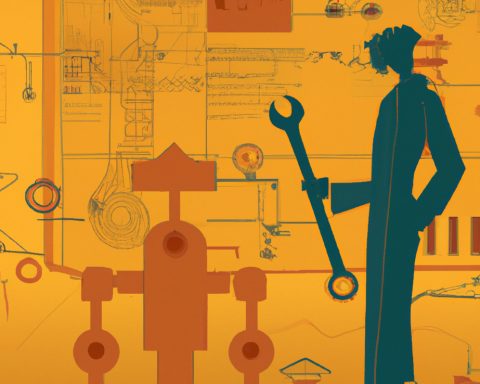In 2015, the rate of conventional breakdowns exploded, with more than 300,000 cases. In addition to these figures, there are two phenomena: burn-out and boron-out, which reflects professional boredom, thus encouraging the French to break with the company.
There is not an evening with friends where one hears about an idea for a "project to be set up" or the desire to fulfil a dream of "freedom" in order to achieve one's professional goals, in conditions considered to be healthier. We can conclude that more and more employees want to leave this "comfort" of the company structure despite the risks involved.
Phy is business so often synonymous with confinement, constraint and suffocation? Why is it that to be realized you have to have your own project when there are already thousands of ideas to be developed as a team? Why does this collective crush the silent individualities instead of revealing them and making them shine? How to make the company develop by relying on the richness of personalities without going in all directions and losing effectiveness?
The company pays for the consequences of certain societal changes. Often anchored in a global market, it has had to pull the rope to keep up with fierce, borderless competition. Guided by new technologies, everything has accelerated and the employee, consciously or not, tries to keep pace. The employee, equipped with a smartphone, wants to be zealous in answering his e-mails at all hours of the day and at weekends, gradually blurring the boundaries between professional and personal life. So it's a hectic pace and endless days that have become the new norm. A pace so exhausting that people are beginning to praise the merits of Slow Business: a pace that would allow them to concentrate on the quality of the tasks performed rather than the quantity.
Once the weekend comes, to relieve the pressure, the worker takes his credit card to go out for a shoot of expenses, more or less useful, but so pleasant, after a long week of work.
And as the temptation to buy is ever more numerous and consumption is the emblem of social success, the worker thinks that if he is so stressed that he has to work harder to have access to this happiness capital... It's the snake that bites its own tail. The snake bites its own tail. Work is thus no longer relegated to the status of intellectual fulfilment, but rather a means of supporting the need for consumption and possession.
And yet despite all these not very encouraging signs for the company, it has a future. And this future does not necessarily involve the "plusses" we imagine: efficiency, speed, hours.
The company must enrol in the extension of the studies. Workers must not mourn the learning, the novelty and the discovery, once a diploma is in hand.
It is certain that the most curious and ambitious people continue to take this time, but at what cost and over what hours? Family, sleep, sport, lunch, leisure activities, etc. all these hours are legitimate and essential to keep a balanced life and to remain efficient in one's functions and happy, quite simply.
If the company wants to grow healthily, it must integrate continuous training and knowledge capitalization into its employer program. In this way, it will be able to save money:
- A high rate of disengagement: without additional training, employees enter into routines that may be effective for a while but quickly become boring. And with boredom comes loss of attendance.
- Illegal self-training (hiding to train during working hours) and therefore stressful or guilt-ridden for the smuggler.
- Expensive departures: humanely at first, as it is always the member of a team who leaves the ship. It's also part of the company's history that flies away to new horizons. And financially at a second stage, because there is always the cost of recruitment, the cost of floating between the two and the cost of integration.
There are many ways of integrating continuing training into the company framework and they are adapted to all types of companies. They can include :
- Feedback on projects between collaborators,
- Lunches where an expert is invited to come and share his knowledge (Brown Bag Lunch),
- The reception of communities in its offices (Meetup),
- The opening of an internal social network where employees share the best articles they have read. By relying on common resources, they will be able to exchange their points of view, debate and thus create new ideas for the benefit of the company,
- Host an internal Mooc: the training courses designed by the company are accessible at any time. It is no longer the company that imposes a rigid framework but the individual who returns to the heart of the system,
- Motivate the production of articles or participation in conferences. This time-consuming exercise is an opportunity to distance oneself from past experience or learning. By describing and deepening a lived subject, the author takes stock and is fully enriched by his or her project.
The vision and mission are some inspiring notions inspired by the convictions of the management or all employees. It is a sequence of words that will help to live more serenely through periods of emptiness or loss of meaning for the employee.
Everybody once wondered about the meaning of his work, this place that motivates waking up every morning and yet does not necessarily answer all his convictions.
Vision and mission give consistency to small, ungrateful, low-valued tasks. They place the "economic" project in a more societal and therefore more human project.
A company project that helps to improve things becomes an ecological project and therefore necessarily more endearing and motivating. Suddenly, with its mission, the company "concerns" and "speaks" to the employee.
Once on paper, the complexity and beauty of this exercise lies in integrating it as much as possible into the reality of the field and the business. It is everyone's business and responsibility - a responsibility that goes beyond hierarchy and individualism.
In the notion of well-being, as an entrepreneur there are two visions to have. The first is to make wellness a priority, because management simply wants people to be happy to stand up for the company. The CEO has his heart on his sleeve and dreams of working in a tide of smiles. That's to his credit.
To this definition, which may seem a bit "bisounouresque", is added the business gain of a collaborator who is well in his head and his sneakers. Favouring well-being does not mean turning one's company into an appendage of Club Med, it is above all favouring and taking into consideration the individual and his uniqueness in a structured collective.
What's more, the employee remains your company's first ambassador. He or she has the power to advertise the company for free and with more convincing arguments than a well-thought-out slogan. He also has the potential - growing with the rise of social media and platforms that evaluate brands from the inside (Glassdoor ) - to praise anything that goes wrong in the structure.
Well-being takes all the forms that the company wishes to give it according to its financial means and personality. This welcoming and fulfilling atmosphere must also be the responsibility of the employees. They are in the best position to know what they need.
Creative premises and offices, a relaxing area to break the intensive rhythm of the days, moments of gathering and celebration of "small victories", sports or cultural outings between colleagues are some examples that can be easily set up. This well-being is above all the relationship of attentive listening, taking the other person into consideration when making decisions. These changes will gradually take hold and create this culture of well-being and a climate of trust, sources of innovation and surpassing oneself.
Today, companies are going a little further in the well-being approach by integrating into their structure programs dedicated to the development of skills and potential of their living force.
If the company does not wish to be overthrown, like all those entities that thought they were "safe" from movement, it must reinvent itself, get out of its controlling comfort zone and fully integrate the employee into its future success.
Victoria De Belilovskyguest columnist, Marketing Manager at IPPON TECHNOLOGIES
Login
0 Comments
Inline Feedbacks
View all comments












